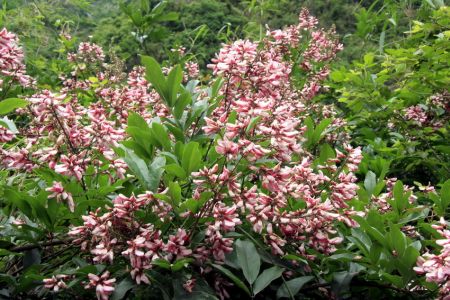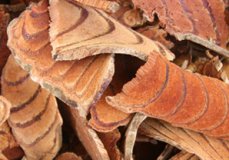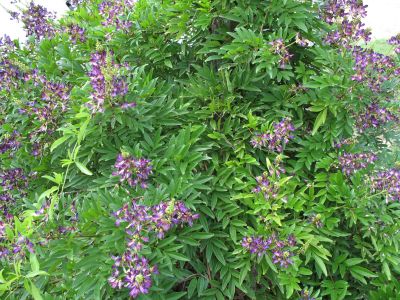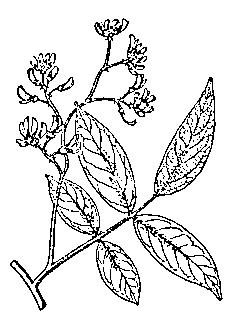[1] Barefoot Doctor's Manual- 1977 Prepared by the Revolutionary Health Committee
of Hunan Province. Original Chinese manual- Victor W. Sidel. Originally published
by Dr Joseph Quin and the Fogarty International centre, Bethdesda (1974). Madrona
Publishers Seattle Washington ISBN 0-914842-52-8
[2] A Complete English Dictionary of Medicinal Terms in Chinese Acupuncture and
Herbalism 1981- Henry Lu Chinese Foundations of Natural Health- The Academy of
Oriental Heritage, Vancouver, Canada.
[3] Translation notes from Gary Seiford and Hocu Huhn- NSW College of Natural
Therapies. Sydney Australia (1982).
Images
1.
youduo.com
2.
e2121.com
Retrieved 24-July-14
3.
[1]
4.
onlineplantguide.com
Research
Bioactivity-guided isolation of anti-inflammation flavonoids from the
stems of Millettia dielsiana Harms.
Ye H, Wu W, Liu Z, Xie C, Tang M, Li S, Yang J, Tang H, Chen K, Long C, Peng
A, Wei Y, Chen L.
Abstract
Bioactivity-guided isolation of the EtOAc extract of the stems of Millettia
dielsiana Harms yielded two new isoflavones together with nine known ones. Their
structures were elucidated by analysis of the spectroscopic data including 2D
NMR. All of the isolates were evaluated for their potential to inhibit the LPS-induced
production of nitric oxide and TNF-α in murine macrophage RAW 264.7 cells. Among
the tested compounds, Millesianin C (1) had the most potent anti-inflammatory
effect decreasing NO production similar to that of dexamethasone and decreasing
TNF-α secretion better than that of dexamethasone. Their structure-activity
relationship was also analyzed.
PMID: 24641946 DOI: 10.1016/j.fitote.2014.03.008 Fitoterapia. 2014 Jun;95:154-9.
doi: 10.1016/j.fitote.2014.03.008. Epub 2014 Mar 16.
ncbi.nlm.nih.gov
Novel benzil and isoflavone derivatives from Millettia dielsiana.
Gong T, Wang DX, Chen RY, Liu P, Yu DQ.
Abstract
The analysis of vine stem extract from MILLETTIA DIELSIANA Harms yielded a novel
benzil ( 1) and five new prenylated isoflavones ( 2 - 6) together with three
known isoflavones ( 7 - 10) and one known flavone ( 11), and their structures
were elucidated on the basis of chemical and spectral analysis. The absolute
configuration of the 3'',4''-diols in 6 was determined by observing the CD induced
after addition of dimolybdenum tetraacetate in DMSO solution (Snatzke's method).
Some isolates were tested for their anti-inflammatory and antithrombase activities
and cytotoxicities. Compound 2, barbigerone, and genistein showed significant
anti-inflammatory activity, with inhibitory ratios 59.1 %, 59.5 %, and 58.5
%, respectively, at 10 muM, while compound 4 exhibited moderate cytotoxicity.
PMID: 19140097 DOI: 10.1055/s-0028-1112203 Planta Med. 2009 Feb;75(3):236-42.
doi: 10.1055/s-0028-1112203. Epub 2009 Jan 12.
ncbi.nlm.nih.gov Millettia
dielsiana. M. reticulata, Spatholobus suberectus 鸡
血 藤 Jī xuè téng
Evergreen wisteria,
Spatholobus, Fragrant cliff pea-vine Family: Leguminosae
Millettia
dielsiana. M. reticulata, Spatholobus suberectus 鸡
血 藤 Jī xuè téng
Evergreen wisteria,
Spatholobus, Fragrant cliff pea-vine Family: Leguminosae
 FLAVOR: Slightly bitter and sweet CHANNELS:
Liver, Kidney
FLAVOR: Slightly bitter and sweet CHANNELS:
Liver, Kidney

 HABITAT:
Grows on hillsides and highlands, and in shrub thickets along forest edges.
HABITAT:
Grows on hillsides and highlands, and in shrub thickets along forest edges.